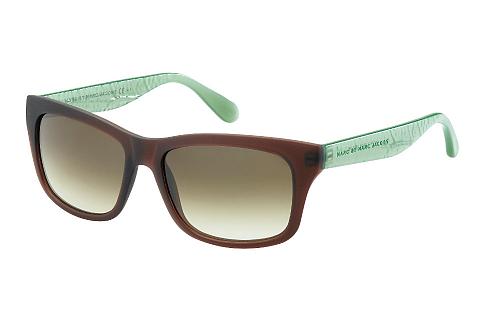Fashion magazines in the US have started selling the clothes they review. At the same time, just as you are now able to purchase the latest Derek Lam and Marc Jacobs pieces from the website of Vogue magazine, the opposite is also happening. Nowadays, every respectable online and brick-and-mortar fashion retailer worth a fashionista’s glance, has a magazine. From high-street to high-end fashion, ASOS, my-wardrobe.com, H&M, all have an online or printed magazine.

ASOS Magazine
As the US Vogue site mentions, “Vogue may receive a commission on some sales made through this service”, which clearly shows that magazines are getting into retail, and they mean business. Meanwhile, ASOS magazine showcases articles about the latest cool personalities and musicians while cleverly squeezing among those pages several features tailored on the season or current trends, listing their own products. This is the latest trend for catalogues that seem less invasive or pushy and, in turn, are more effective in selling the stock. If before you needed to walk into the shop to be sold a skirt that could be paired with the sales assistant’s suggestion of a certain top and shoes at, for example, your next Christmas party, now you need only to flick through the pages of ASOS’s glossy to see features about what to wear for such an occasion from head to toe, nails included.

Moda Operandi website, with links to trunk shows.
Magazines used to help designers sell, at times even guaranteeing coverage to those who buy advertising spaces in their pages, but now they are starting to represent competition to traditional retailers and high-end department stores such as Selfridges and Harvey Nichols. There are no more boundaries between these two industries. Vogue recently teamed up with the new online luxury catwalk looks retailer Moda Operandi to get closer to the consumers and Style.com has also started selling clothes.

Style.com website with a link on the top right to purchase a Rebecca Taylor top.
A technique widely used by both gloss magazines and online retailers is the Editor’s recommendation. Websites such as my-wardrobe.com and Net-a-Porter.com often feature Editor’s Pick pages, which lure the consumers into feeling “if a fashion Editor has picked this product, it must be good”.

Designers' picks and links to their collections on Net-a-porter.com.
Indeed, these two business trend changes are related by the fact that retailers started producing catalogues that look more like glossies than mere marketing products paired with the fact that magazines have been experiencing advertising losses for years now, due to the threat constituted by online competition and recession. The readers and consumers have changed their expectations too, in the last few years. It is so common these days to have links through to whatever object we covet and wish to purchase, that if a magazine or website shows us a great frock, and then does not let us buy it, we get frustrated and are, in turn, unhappy readers/customers.
However, Lauren Santo Domingo, a contributing editor at Vogue and Moda Operandi co-starter believes that her site, which provides an online version of a shop’s trunk show, has in fact a positive impact on designers’ sales figures, offering a real service by enabling them to understand, before the clothes are produced, which styles customers are interested in buying. Through the website, designers are also able to sell high-fashion, super-expensive and eccentric pieces which traditional stores would normally steer well away from. Although the site was only created about a year ago, Aslaug Magnusdottir, the other half of Moda Operandi, expected to gain 120,000 subscribers in the last quarter of 2011. More than 40% of their customers went back to the website to purchase more items after their first buy and the average transaction is about US$1,500 (ca. £950).

Aslaug Magnusdottir, left, and Lauren Santo Domingo at their The Madison Avenue office of Moda Operandi. Source: http://www.nytimes.com.
Ms Magnusdottir said that “the consumer becomes the buyer”. That sounds like a good way of putting it, however they are a buyer who is still heavily biased by trends dictated by glossies, be it a catalogue magazine or a traditional publishing one.









